East SIG Report September 2022
9th November 2022
Host Frank Maher welcomed members to the September Zoom meeting of the East SIG. Frank then outlined the nights agenda below:
Presentation 1: Q&A with Georg Skarbek
Presentation 2: Tuning Windows 11 – Personalisation and Privacy issues
Main presentation: Electric Commercial Aircraft by Viv Ellison
The first presentation of the night was Q&A by George Skarbek.
Question 1 – I want a program like the Windows clipboard, but also a second clipboard. I’ve searched the internet but haven’t been able to find what I’m after. Currently I copy data, but I also want to copy the tag data (i.e. Date & time) attached to it, as this would save me a lot of typing. For example, earlier today I was capturing some share price data and saving it into files. I want to save each capture as BHP08September.txt, CBA08September.txt, ANZ08September.txt etc, so that’s why I need 2 clipboards.
Answer 1 – I haven’t used OneNote for about a year, but I suspect that has a date stamp. OneNote is part of Windows, so you may already have what you need.
[Audience suggestion] You could use the Windows “Snipping” tool (WinKey + Shift + S) and use its meta data (date & time) to sort your files.
[Stuart Gruneklee from iHelp] If you need multiple items on a clipboard, it’s already there in Windows 10 or 11 under Clipboard History. Press WinKey + V and you have a selection of items copied to the clipboard that you can use. You would do this by saving the date as one item on the clipboard and then save the BHP, CBA etc. as other items on the same clipboard and choose whichever one you want to paste from Windows Clipboard History.
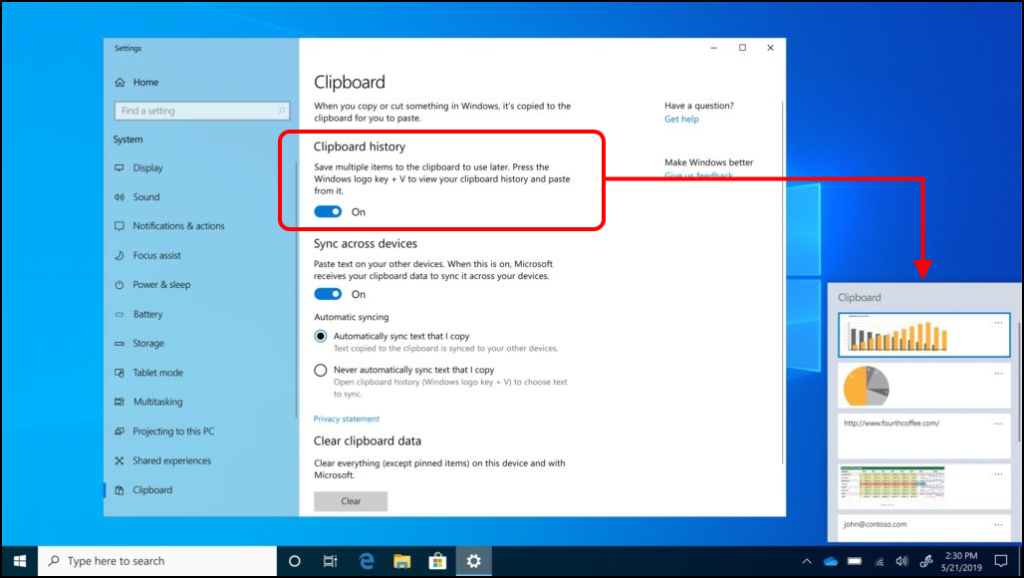
Figure 1 – Windows Clipboard History
Question 2 – I’ve had trouble shutting down my PC on a fairly regular basis. A message flashes up that a program is still running and the computer can’t shut down. After many months I think I’ve tracked down which programs exe file is the cause of my problem. It appears to be part of Zoom Apps, but I haven’t downloaded any Zoom Apps. After a lot of research, I can’t determine whether I can delete this file (zCefAgent.exe) or not. My question is can I afford to move or delete it?
Answer 2 – I’m not familiar with that file but there are a couple of things you can try. Open Task Manager (Ctrl + Shift + Escape} and select the Start Up tab on the top. See if that program is in StartUp, and if it is, disable it. That’s not uninstalling it, it’s still there but means it won’t be in memory all the time.
As you’ve identified the problem file, another way is to rename the .exe file to .exe.old. That way the file can’t be found by whatever is using it, but you haven’t deleted it. If changing the file extension doesn’t cause any problem, your issue is solved. On the other hand, if it does cause a problem, you can rename the file back by removing the .old extension. I think changing the extension is a better option than renaming the file, as it would be more obvious in a few months’ time if you need to change it back again.
Following Q&A, Dave Botherway played a video by Leila Gharani titled “Windows 11 Settings You Should Change NOW!”, at https://www.youtube.com/watch?v=Kx3H8BolgaI
The video details 7 settings, some of which are Windows 11 default settings, that you should change right now. The changes have an impact on your privacy and improves the overall Microsoft Windows 11 user experience. This video is clear and precise and highly recommended for navigating the Windows Settings menus.
The settings Leila suggests you change are:
- Delete the recommended items in the Start menu and Jump list, then add shortcuts to the vacant area between the profile picture and power button.
- Disable annoying Notifications and Ads
- Change Privacy settings, such as speech, diagnostics and feedback, activity history & others.
- Change App Permissions for Apps that don’t need access to your physical location, camera, microphone and other devices.
- For added security limit where Apps can be installed from Eg MicroSoft Store
- Disable Programs at StartUp not on your VIP list
- Sign in with a Local Account if you want greater privacy

Figure 2 – Windows 11 Settings You Should Change NOW!
The main presentation was by Viv Ellison on Electric Commercial Aircraft. This was different to our normal computer related topics but one that the audience found very interesting and voted with a show of hands for more technology topics like Viv’s in future.
To avoid becoming too technical, Viv presented electric aircraft projects he felt would be of most interest. Ten years ago, most people would have felt electric aircraft were impractical. At that time, batteries and electric motors were very heavy and the motors weren’t very powerful. However, since that time things have changed. There are hundreds of electric aircraft companies now in existence, all vying for future business.
The rapid pace of development of electric aircraft is analogous to the early manned flights. The first (photographed) powered flight was by the Wright brothers in 1903, or arguably a year or so earlier by others. In 1907 aircraft development had progressed considerably with the Wright Flier, which was able to take off unassisted and with the pilot sitting upright rather than lying down.
In the short time period from 1907 to 1917, the Vickers Vimy was one of hundreds of aircraft developed. In 1917, Alcock and Brown made a 16-hour non-stop flight across the Atlantic in the Vickers Vimy. In the same year, Australians Keith and Ross Smith flew from London to Darwin in the same aircraft. What the past shows is how quick aircraft technology progressed and the current electric aircraft are following the same trajectory.
Viv’s followed by presenting a number of different electric aircraft projects by way of videos from YouTube, followed by commentary and audience discussion after each video. In this report I have listed the title and URL for each video for those who would like to know more.
Solar Impulse
In 2016, the Solar Impulse was a proof-of-concept project to fly around the world without using any fuel, using a fully solar powered aircraft. The technology behind this achievement is quite amazing. To circumvent the world, the Solar Impulse had to travel across the Pacific and Atlantic Oceans. The longest flight was 116 hours while crossing the Pacific Ocean. This required the Solar Impulse to fly through the night for 3 or 4 nights. During those night flights, the pilot would have had to stay awake for most of that time. Viv felt most people probably didn’t appreciate the risks involved.
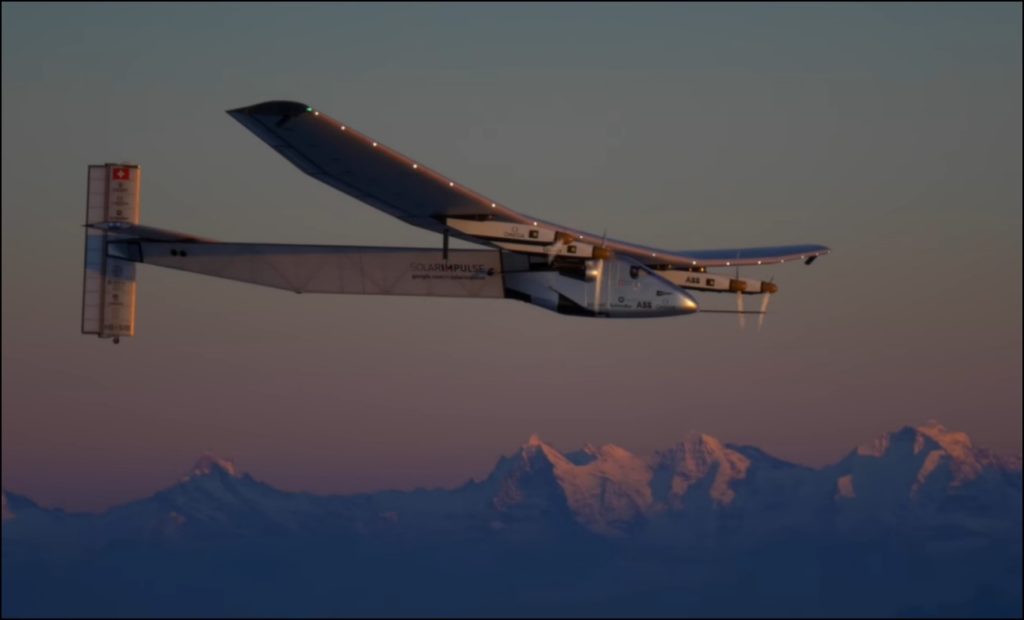
Figure 3 – Solar Impulse
The 2 adventurers involved were Bertrand Piccard & Andre Borschberg. The aircraft had batteries on board and during the day there was enough energy generated from the aircrafts solar panels to fly the aircraft and charge the batteries. During the day, the Solar Impulse flew as high as it could, at between 20 to 30 thousand feet, so that during the night when it ran on batteries, it could afford to gradually lose height. No external energy was used at all.
This concept has been taken further by another aircraft called the Solar Stratus. This aircraft is capable of reaching 80 thousand feet to the fringes of space, just with solar energy. Boeing is thinking of building aircraft like the Solar Stratus that can stay in orbit indefinitely, as satellite replacements. Viv said there are many spinoffs that are coming from those who felt the Solar Impulse was a so-called impractical project.
“On 9 March 2015, Piccard and Borschberg began to circumnavigate the globe with Solar Impulse 2, departing from Abu Dhabi in the United Arab Emirates. The aircraft was scheduled to return to Abu Dhabi in August 2015 after a multi-stage journey around the world. By June 2015, the plane had traversed Asia, and in July 2015, it completed the longest leg of its journey, from Japan to Hawaii. During that leg, the aircraft’s batteries sustained thermal damage and took months to replace. A battery cooling system was installed and Solar Impulse 2 resumed the circumnavigation in April 2016, when it flew on to California. It continued across the US until it reached New York City in June 2016. Later that month, the aircraft crossed the Atlantic Ocean to the city of Seville. It stopped in Egypt before returning to Abu Dhabi on 26 July 2016, more than 16 months after it had left, completing the approximately 42,000-kilometre (26,000-mile) first circumnavigation of the Earth by a piloted fixed-wing aircraft using only solar power.” [Wikipedia]
Video 1 – “Solar Impulse” https://www.youtube.com/watch?v=brjJmmjeJnQ
Additional video https://www.youtube.com/watch?v=dnhL8fiTYoY
Spirit of Innovation
The Spirit of Innovation was a very different project to the Solar Impulse. It was designed to be the world’s fastest all-electric aircraft, with the aim to set three new world speed records for an electric aeroplane. The two firms involved in the project were Rolls Royce and Electroflight. Rolls Royce had extensive experience in jet aircraft engines and the aerospace industry, while Electroflight specialises in battery systems for aerospace and defence.
Rolls-Royce were pivotal in achieving the speed records, through the development of the electric power train. This pioneering technology delivered clean, safe electric power for the planes vital power needs. The development of the electric power train has set Rolls Royce up for the future as a leader of this technology.
The main design challengers were to create a power train that was capable of delivering 500 horse power and to design a battery that can hold enough energy to break the speed records. These records were, to break the 3km record, the 15km record and the time to climb record.
The video details the design process and how the 3 speed records were broken, all by significant margins. Over 3km, the Spirit of Innovation reached a top speed of 345.4 mph. Pilot Steve Jones later went on to break the other records, reaching 330 mph over 15km and climbed 3000 metres in 202 seconds, beating the current time to climb by 60 seconds.
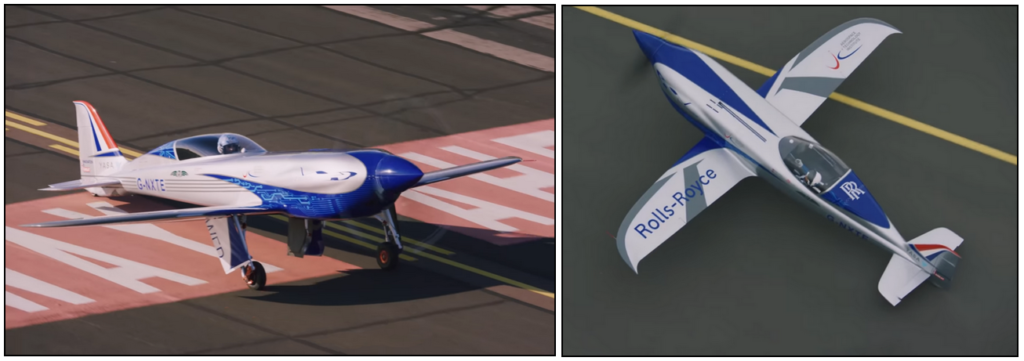
Figure 4 & 5 – Spirit of Innovation
Viv believes Rolls Royce were involved, in what would have been a very expensive project, as they could see it as an opportunity to develop technology for the future. Rolls Royce is now offering electric compulsion conversions of existing fossil fuel aircraft to electric.
Due to the risk of fire, aviation batteries have cooling systems in place to reduce this risk, but otherwise are lithium-ion batteries. Current battery technology is likely to change in the future as further developments occur. As the weight of batteries is significant, Viv believes where there is a need, innovation and significant R&D will occur, due to the prize to be won.
The engines of fossil fuel aircraft are complex, require costly maintenance and the cost of fuel is significant, whereas electric aircraft are significantly cheaper to run and have fewer moving parts requiring maintenance.
Video 2 – Spirit of Innovation break speed record
https://www.youtube.com/watch?v=4hapBP-Cdis .
P-Volt
The third video Viv played features the P-Volt. Development of this aircraft involved the original Italian aircraft manufacturer Tecnam, and Rolls Royce.
The P-Volt is based on Tecnam’s existing piston P20-12 aircraft, and is a 11-seat twin engine fully electric commercial aircraft. It uses a Rolls Royce electric propulsion engine with an automated battery swapping system for quick turnaround.
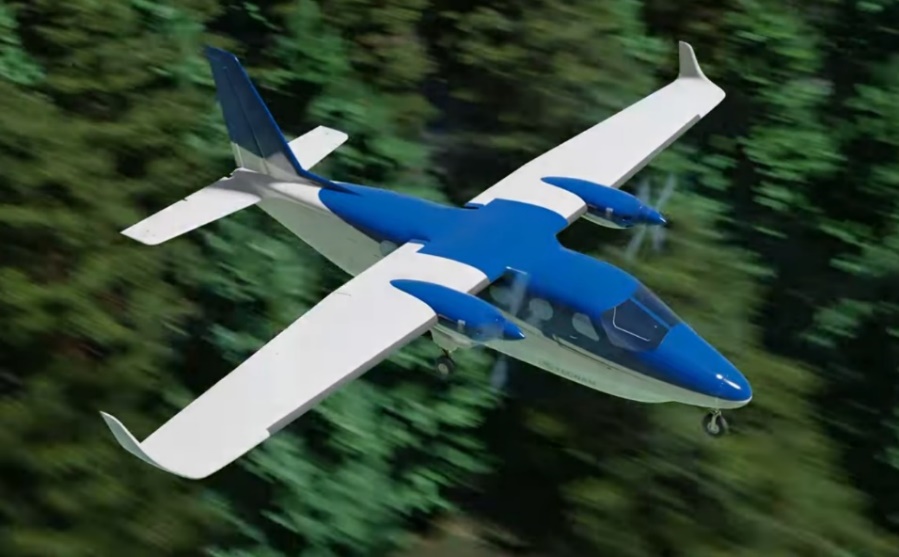
Figure 6 – Tecnam P-Volt
When certified by the FAA, the P-Volt will provide environmentally friendly flying, with zero emissions and low noise. The aim of this aircraft is to save travel times by connecting communities currently not being served. At the time of his presentation, Viv believes the P-Volt is still awaiting certification by the FAA.
Rolls Royce was again involved due to their ground breaking power train technology. This technology opens up the market to sell its electric power train for both new aircraft or for those wishing to convert their existing planes. Viv believes smaller aircraft conversions will become fairly common in future.

Figure 7 – P-Volt fitted with Rolls Royce electric propulsion engine
Figure 8 – P-Volt Battery swapping system
In the last few months, an aircraft company that fly Otters in Canada has received FAA certification for the conversion to remove the turbine engines and replace them with electric motors. This company operate sea planes for relatively short-range passenger flights in Canada, landing on lakes.
The price of fuel is currently the biggest cost for aircraft companies. Viv believes we will see the fossil fuel aircraft disappear fairly quickly because of the complexity of the engine, the amount of maintenance required and high fuel costs compared to electric powered aircraft.
The prize for better battery technology is enormous, so considerable R&D is taking place in this area at present. An audience member mentioned an Australian company is developing a Lithium Sulphide battery which claims a 2 to 1 weight to power improvement over standard Lithium-Ion batteries.
Video 3 – Powering the P-Volt
https://www.youtube.com/watch?v=Qx8DVpv6Khs
Alice
Eviation’s Alice all electric aircraft features in the fourth video played. This aircraft is a 9 seat 1 pilot commuter aircraft aimed at short haul flights of less than an hour. The Alice features 2 rear 650 kilowatt electric engines, claiming quick turn arounds with only 30-minute charging needed after a 1-hour flight. Testing is proceeding with 2025 as the likely start date for passenger flights. Even at this stage of its development, the Alice has received orders from Cape Air for 75 aircraft, for use inside the United States and 12 orders from DHL.
Eviation aim for their planes is to tap into smaller underutilised airports across America. They believe new markets and destinations will evolve with the Alice. The economics of this smaller electric passenger aircraft means 2 planes and 2 pilots to make up capacity, is still cheaper and sustainable than a single larger piston powered aircraft. In addition, the Alice offers zero emissions and low noise. Viv believes this aircraft to be more practical than the P-Volt from the previous video.
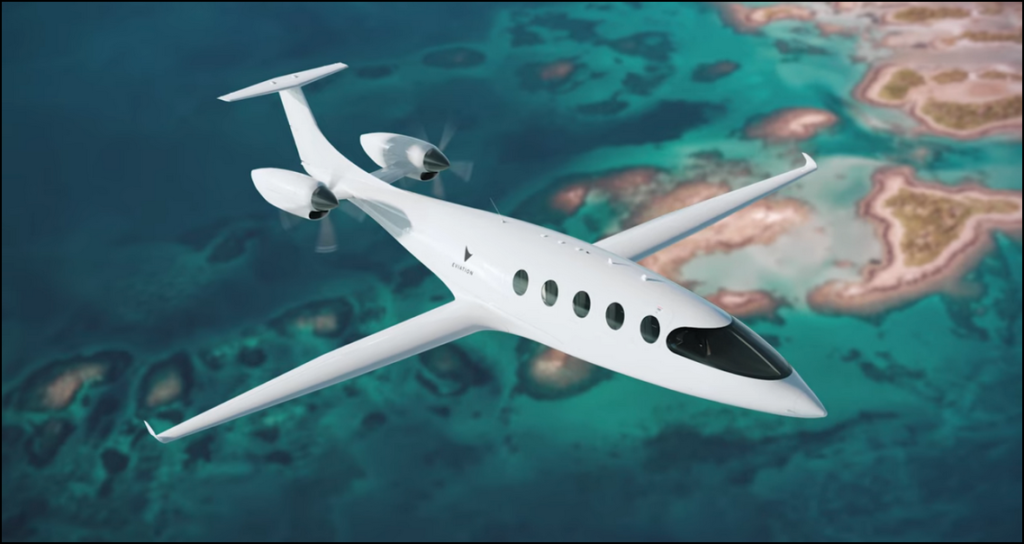
Figure 9 – Eviation’s Alice
Viv also feels hydrogen fuel cells are likely to be the future for larger aircraft of this type, but that technology is further away. Most of the electric powered aircraft are made of almost all carbon fibre, with very little aluminium. This seems to be a trend of where aircraft manufacturing is headed.
There are many other electric aircraft projects similar to the Alice that aim for about 1 to 1½ hour flight times, travelling at around 300 km/hour. This gives a range of about 300 to 400 kilometres. These aircraft are not aimed at Melbourne to Sydney type flights, but Melbourne to Ballarat or Melbourne to Albury range. Currently 75% of air travel is of shorter flights. Viv therefore believes electric aircraft are likely to gain a foothold in those markets. As technology develops, it’s likely we’ll see much larger electric aircraft than the Alice.
Video 4 – “Eviation’s Alice Electric Aircraft Could Fly to Small Towns While Cutting Emissions – FutureFlight” at https://www.youtube.com/watch?v=xCJlp4KiPRo
Lilium Jet Technology
The Lilium is the most impressive aircraft Viv has come across. It’s been developed by a start-up company setup by 4 individuals in various engineering fields. These are, Daniel Wiegand, CEO and Co-Founder (PhD in Aeronautical engineering), Matthias Meiner, Chief Engineer and Co-Founder (PhD in Robotics), Brian Phillipson, Deputy Chief Technology Officer (50 years’ experience in design and development of fast Military aircraft and the Harrier Jet etc.), and Alastair McIntosh, Chief Technical Officer (30 years’ experience in aviation with Rolls Royce).
The design of the Lilium is unusual because the designers started with an open mind and chose not to adopt conventional design concepts. The Lilium is again an electric aircraft using batteries but with a very unconventional design that allowed for vertical take-off and landing. The design was optimized for the dominant and longer cruise phase of the flight, rather than the take off and landing phase. It’s still in the development stage and has seen 5 design changes since the first concept.
The video Viv played covers stage 5 of the Lilium’s design. This design comprised 36 electrical ducted jet motors, incorporated into the aircraft wing flaps. Three ducted electric jet motors comprise each flap, and each flap is powered by its own battery pack, to give the craft more redundancy. As can be seen in Figures 10, 11 and 12, the Lilium features a small wing at the front and larger wing at the rear.

Figure 10 & 11 – Lilium
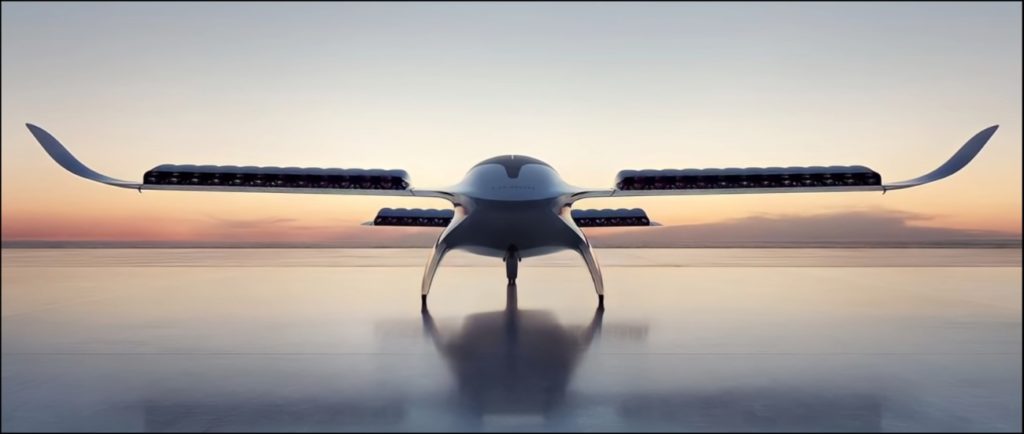
Figure 12 – The Lilium viewed from the back
The developers claim a significant reduction in engine noise due to the inclusion of acoustic linings in the ducted engines. As the electric engines are integrated into the wings, there is less weight and less drag. The design comprises 4 flaps at the front of the aircraft (i.e. 12 ducted electric jet engines) and 8 flaps on the rear wings (i.e. 24 ducted electric jet engines). As the engines are mounted in the flap, the plane is able to be controlled simply by the flap angle and engine RPM. This approach reduces the need for moving parts such as tails, ailerons, elevators and a rudder, all which are required for a conventional aircraft.
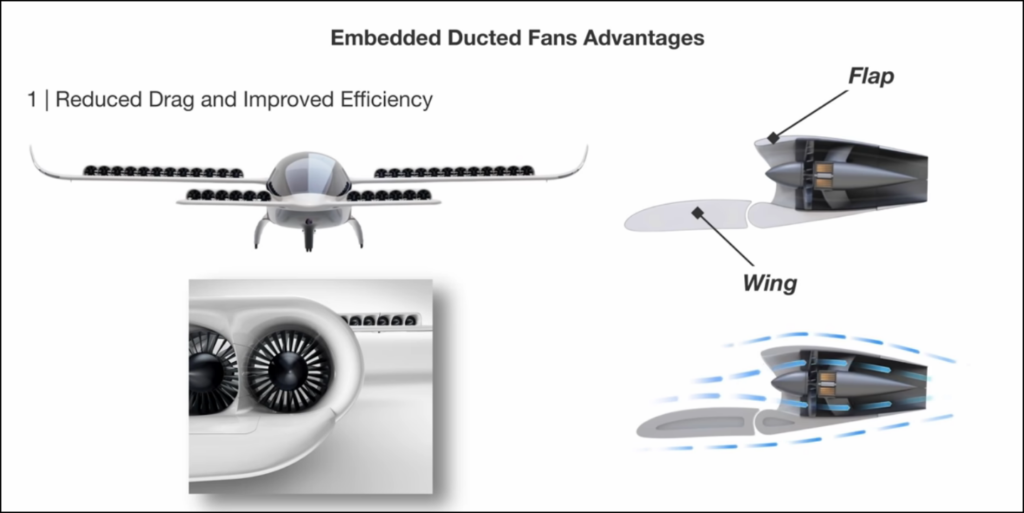
Figure 13 – Lilium ducted fan arrangement
A more recent video from June 2022 and not included in Viv presentation, shows slight variations to the design mentioned. The most significant change reduces the engines from 36 to 30, while still maintaining a range of 250 km.
There are many other YouTube videos that can be found on the Lilium, all make interesting viewing.
Video 5 – “The Insane Engineering behind The Lilium Jet | Part 1”
https://www.youtube.com/watch?v=ZpdDY2rDsLI
Update Video “The Insane Engineering behind The Lilium Jet | Part 2” June 2022
https://www.youtube.com/watch?v=Cn-5qqgEW6E
Viv felt the Lilium was a very impressive development and sees the Lilium as a replacement for helicopters in cities, due to its vertical take-off and landing, and quieter operation. It is likely to develop new areas in the aviation market and may even replace taxis. The Lilium currently has a flight time of 1 hour and travels at 290 km per hour.
Jetson One Commute
The final video was on the Jetson One Commute. This “aircraft” has the appearance of a one-person drone and is shown in Figure 14. It has 8 electric motors mounted in pairs, and a flight time of 20 minutes. Under FAA rules this “aircraft” is classified as an ultra-light vehicle. It therefore does not require a licence to fly and can only be used for recreation. At the time of the video’s recording, 400 Jetsons had been sold. Jetson Aero have plans for 2- and 4-seater versions, but are waiting for regulators to sort out regulatory requirements.
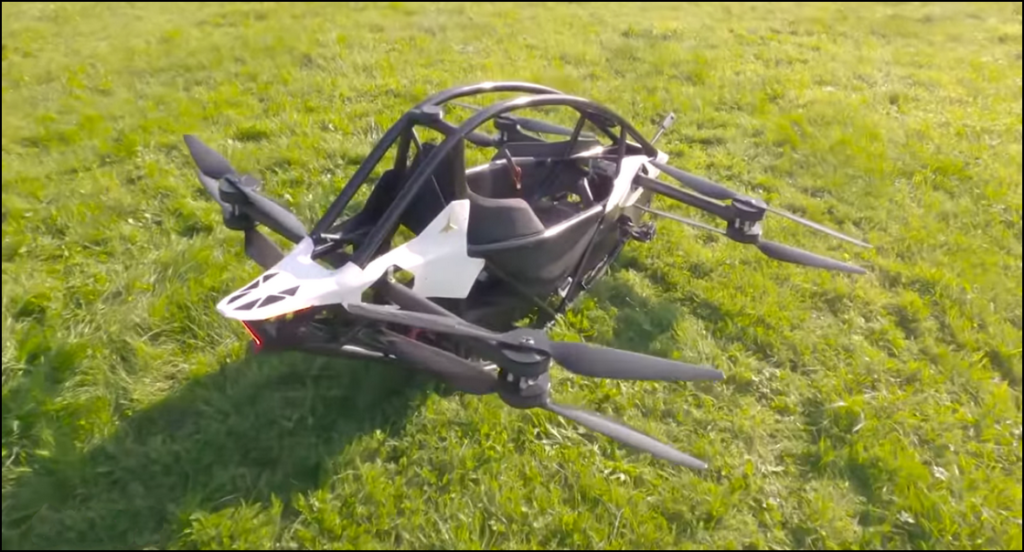
Figure 14 – Jetson One Commute
Viv believes this area of aviation needs greater regulation as these vehicles could be quite dangerous in the wrong hands. With improvements in technology, the range of the Jetson One will improve. As the personal area of aerial mobility is an appealing one, markets for these types of craft are likely to develop further in the future.
Video 6 – “What It’s Like to Commute in a Personal Flying Vehicle” https://www.youtube.com/watch?v=3fzYXqZateM
Retro Fitting
To conclude his presentation, Viv made the following observations on retro fitting existing aircraft.
- Retro-fitting is an economical way to transition to electric propulsion.
- Specialist aerospace companies (including Rolls Royce) already offer this technology.
- Many existing well proven aircraft are very suitable for retro-fitting.
- Electric motors are simpler, more reliable, and quieter.
- Operating and maintenance costs for electric aircraft is a fraction of that of “fossil fuel” aircraft.
- About 75% of airline flights are regional, many within current electric aircraft range.
- Often these flights are economically marginal – and frequently subsidised
- Conversion will mean lower prices, and new previously uneconomic services will open.
- Commuter airlines that don’t convert are unlikely to remain competitive.
- Clean electrical energy can be produced locally, which is a big advantage in remote areas
Examples:
Harbour Air
- Harbour Air is the largest all seaplane airline in North America, flying 30 de Havilland Beaver 6 passenger aircraft.
- The company flies more than 500,000 passengers annually on its 30,000 commercial flights each year.
- Harbour Air’s entire fleet of 30 aircraft are planned to be converted to all electric aircraft.
Rex Airlines
- Rex Airlines operate Saab 340 aircraft and aims to convert these to electric.
- Rex aims to trial the technology on its 34-seat Saab 340 aircraft, that it uses on regional routes under one hour, such as its Mount Gambier to Adelaide route.
- Rex will initially trial both batteries and hydrogen fuel cell technology beginning in 2024
- While being cheaper to operate, the retrofitted aircraft are also expected to be safer and quieter
- Other smaller aviation companies have said they will be looking to do something similar.
Conclusion
To conclude his presentation, Viv made the following observations. The first solar flight by the Solar Impulse was only in 2016. The videos shown in this presentation reveal how rapidly electric aircraft travel has developed. Electric engines have only one moving part, so maintenance savings will be significant, when compared to a piston engine and a jet engine, the latter which is quite complex. The electric motors used in these aircraft are completely different to those most would be familiar with. Their whole construction is completely different. They are extremely light and more like a disc brake in a car than the old squirrel case motor. As R&D on batteries develop, aircraft will become far more capable. A further development is to use solar coatings rather than solar panels, this has the potential to charge batteries while in flight.
Following Viv’s presentation, the audience voted with a show of hands for more technology presentations like this main presentation.



Recent Comments